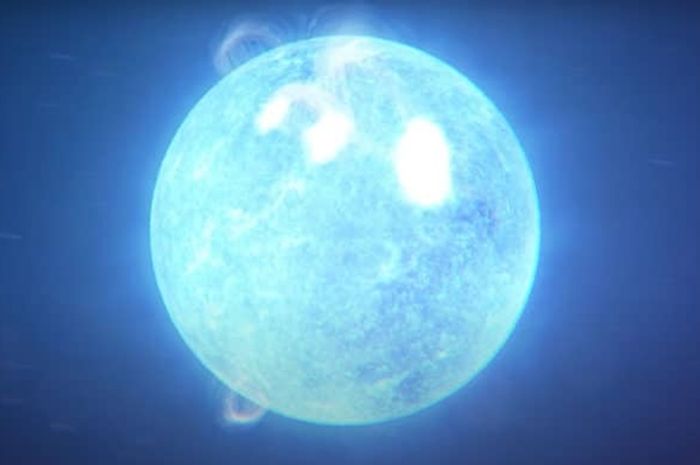NASA’s Goddard Space Flight Center
–
SGR 1830, is at a distance of 13,000 light-years, with brilliant hot spots on its erupting surface.
–
Nationalgeographic.co.id—Magnetar is kind of neutron star isolated, disintegrating cores are left behind when a massive star explodes. Compressing more mass than the Sun into a ball about 20 kilometers long, a neutron star is made of matter so dense that a teaspoon would weigh as much as a mountain on Earth.
For the first time, NASA’s Neutron star Interior Composition Explorer (NICER) has observed the merging of millions of degree X-ray spots on the surface of a magnetar, the core of a supermagnetic star no bigger than a city.
“NICER tracked how three bright spots emitting X-rays slowly roamed the surface of the object while also decreasing in size, providing the best view of this phenomenon,” said George Younes, a researcher at George Washington University in Washington and NASA’s Goddard Space Flight Center in Greenbelt, Maryland. “The biggest places are finally merging with the smaller ones, which is something we’ve never seen before.”
This unique collection of observations, described in a paper led by Younes and published on January 13, 2022 in the journal The Astrophysical Journal Letters by title Pulse Peak Migration during the Outburst Decay of the Magnetar SGR 1830-0645: Crustal Motion and Magnetospheric Untwisting. In the study, it helped guide scientists to a more complete understanding of the interactions between the crust and the magnetic fields of these extreme objects.
What distinguishes magnetars from others is that they have the strongest magnetic fields, up to 10 trillion times stronger than refrigerator magnets and a thousand times stronger than ordinary neutron stars. Magnetic fields represent a huge storehouse of energy. When disturbed, it can trigger a burst of increased X-ray activity lasting from months to years.
On October 10, 2020, NASA’s Neil Gehrels Swift Observatory discovered such an explosion from a new magnetar, called SGR 1830-0645 (or SGR 1830 for short). It is located in the constellation Scutum, and while its exact distance is not known.
However, according to astronomers’ estimates, the object is located about 13,000 light-years away. Swift pointed the X-Ray Telescope at its source, and detected a repeating pulse that revealed that the object was rotating every 10.4 seconds.

NASA/NICER/G. Younes et al. 2022
–
Final snapshot of a plot tracking 37 days of change in SGR 1830 peak X-ray emission as seen by NASA’s NICER. The green, yellow, and red areas represent the regions that produce the most X-rays and are thought to represent magnetar hotspots. They change in intensity and position relative to each other over time. For the first time, astronomers have recorded two such points joining.
–
NICER observed SGR 1830 nearly every day from its discovery until November 17, after which the Sun was too close to the field of view for safe observation. During this period, the emission peaks gradually shifted, occurring at slightly different times in the rotation of the magnetar.
The results support a model in which spots form and move as a result of crustal motion, in the same way that the movement of tectonic plates on Earth drives seismic activity.
PROMOTED CONTENT
Featured Videos
–


